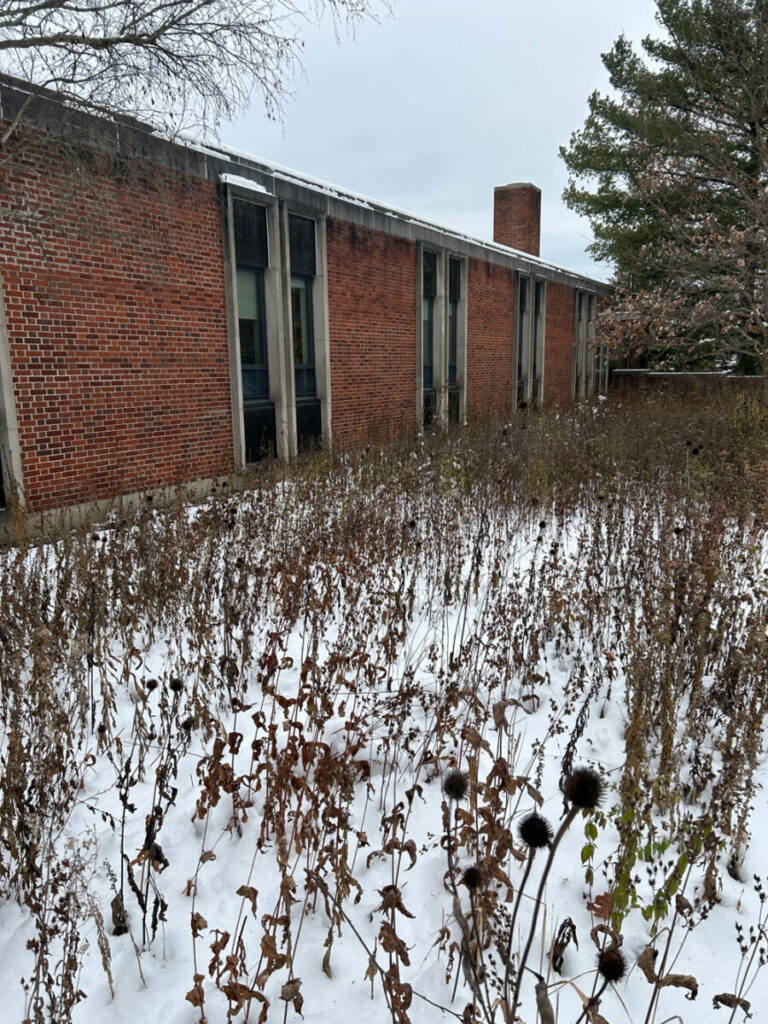The dormant season, spanning from late fall through early spring, is a rest period for most plants in the northeastern United States. While growth slows or ceases, this time presents key opportunities for landscape architects, conservationists, and native plant enthusiasts to prepare for the next growing season.
Contrary to the perception that winter is a time of inactivity, this season allows for strategic seeding, site preparation, and soil assessment. Many native seeds require exposure to cold, moist conditions—a process known as cold stratification—to break dormancy and germinate in spring. Additionally, preserving winter habitats benefits pollinators and wildlife.
This article explores the ecological significance of the dormant season, best practices for preparing native plantings, and strategies for ensuring healthy growth in the spring.
Understanding the Dormant Season
The dormant season is when plants pause active growth. In the northeastern United States, this period typically lasts from late fall through early spring. Lower temperatures and shorter daylight hours slow photosynthesis and metabolic activity.
During this time:
- Deciduous trees shed their leaves.
- Herbaceous perennials die back to their root systems.
- For many native seeds, dormancy is broken when they’re exposed to low temperatures and freeze/thaw cycles typical of this time.
Ecological Significance
Dormancy helps plants survive winter by conserving energy and protecting them from freezing temperatures. Perennials focus on root development, making them more resilient for the next growing season.
Dormant season planting is an effective way to establish native vegetation. Many seeds require cold stratification to germinate. Sowing seeds in late fall or early winter allows conservationists to use natural cycles to improve germination rates in the spring.
Benefits of Dormant Season Planting
Many native plant species benefit from being seeded in winter. Dormant season planting can:
- Improve germination rates by allowing seeds to undergo cold stratification.
- Reduce competition from weeds, which tend to emerge later in spring.
- Take advantage of natural freeze-thaw cycles to enhance seed-to-soil contact.
- Allowing seeds to germinate at the earliest time will lead to strong root development during the growing season.
Because seeds sown during dormancy are naturally exposed to winter conditions, they often emerge hardier and more adaptable in spring.
Strategic Planning for Restoration During the Dormant Season
For landscape architects and conservationists working on habitat restoration or large-scale native plantings, the dormant season offers rare breathing room for strategic decision-making without the pressure of active planting schedules.
Key Planning Activities to Prioritize
Taking full advantage of winter’s quiet can lead to better-coordinated projects, more resilient plantings, and smoother spring execution:
- Evaluate past planting outcomes.
Which areas were established successfully? Which struggled? Make a note of where invasive species returned, where erosion occurred, or where plant density didn’t meet expectations.
If possible, conduct winter site walks to identify signs of soil instability, frost heave, or standing water. These observations can help shape your spring approach.
- Refine your species selection.
After reviewing the year’s outcomes, refine your plant list.
Replace underperforming species with better-adapted alternatives. Prioritize species that are regionally native, support ecosystem goals, and match your site’s unique conditions.
- Secure your seed early.
Ordering early helps ensure availability, avoids substitutions, and gives you time to review seed tags, blend specifications, and site compatibility.
Choose suppliers like Ernst, who provide high-quality, locally adapted, pure live seed with transparent sourcing information.
- Prepare your team and schedule.
Map out the year’s timeline for seeding, mowing, maintenance, and site monitoring. If necessary, coordinate with contractors or volunteers well in advance.
- Address site preparation logistics.
Create a checklist for clearing debris, testing soils, or controlling persistent weeds. Line up any equipment or materials you’ll need to implement those actions as soon as conditions allow.
By treating the dormant season as a working season—not just an off-season—project leaders and individual contributors can lay the foundation for healthier, more successful native plantings.
How to Prepare Native Plantings During the Dormant Season
Once planning is complete, the dormant season remains an ideal time to take physical steps that ready your site for spring planting.
Focus on site-level preparation that supports seed-soil interaction, reduces early competition, and protects existing beneficial vegetation.
Dormant Season Prep Tasks
Winter maintenance helps native landscapes stay healthy. Key tasks include:
- Clear invasive or weedy growth from the planting area. Removing seed heads or leftover biomass from aggressive species prevents them from gaining an early advantage come spring.
- Remove and dispose of diseased plant material. If signs of fungal infection or pest pressure remain from the growing season, remove this material entirely—don’t compost it. This reduces the carryover of pathogens into the new planting cycle.
- Rough grade and stabilize the soil. If seeding is planned, lightly scarify or rake the soil surface to break up compaction and improve seed-to-soil contact. Avoid deep tilling, which can bring dormant weed seeds to the surface.
- Spread mulch selectively. In areas with existing native vegetation, a light layer of organic mulch can help prevent frost heave and suppress cool-season weeds without hindering seedling emergence. Avoid overly thick applications.
- Mark planting zones. Use flags, stakes, or temporary signage to designate no-mow zones, seed mixes by area, or sensitive habitat boundaries. Doing this now helps crews avoid mistakes during spring implementation.
By completing these tasks during the dormant season, you reduce time pressures later and help set the stage for a smoother planting process.
Selecting the Right Native Plant Species
Not all plants thrive when seeded in winter. For the best results, choose species that:
- Are native to the northeastern U.S. to ensure ecological compatibility.
- Require cold stratification for proper germination.
- Support pollinators and local wildlife by offering seasonal blooms and habitat.
Ideal species for dormant seeding include:
- Goldenrod (Solidago nemoralis)
- Aromatic Aster (Aster oblongifolius)
- Blackeyed Susan (Rudbeckia hirta)
- Purple Coneflower (Echinacea purpurea)
Native grasses such as Little Bluestem (Schizachyrium scoparium) and Switchgrass (Panicum virgatum) also establish well when planted in winter. Choosing the right species ensures a more successful and ecologically beneficial landscape.
A well-prepared site maximizes the benefits of dormant season planting, leading to healthier, more resilient native plantings in spring.
Dormant Season Planting
Sow seeds in late fall through mid-winter when soil temperatures consistently stay below freezing (32°F). This timing allows seeds to undergo natural cold stratification, promoting germination in spring.
Lightly rake the soil after seeding to ensure good seed-to-soil contact. Covering seeds with a thin layer of mulch can protect them from wind and birds.
Best Practices for Dormant Season Seeding
For successful winter seeding:
- Sow seeds when soil temperatures remain below freezing (32°F) to prevent premature germination.
- Choose a period from late fall to mid-winter for optimal cold exposure.
- Cover seeds with a thin layer of mulch to protect against wind and wildlife.
- Avoid compacting the soil, which can limit seedling emergence.
By following these practices, native plantings have the best chance to thrive once temperatures rise.
Meet Your Overwintering Seed Needs with Ernst
Preparing native plantings during the dormant season ensures stronger, healthier growth in the spring. By understanding dormancy, supporting pollinators, and implementing best practices for seeding and site preparation, conservationists and landscape architects can improve the success of their plantings. Native plants not only enhance biodiversity but also contribute to more resilient ecosystems.
For high-quality native seeds and expert guidance, Ernst Conservation Seeds offers a wide selection of regionally appropriate species ideal for dormant season planting.
Whether you are restoring a habitat or enhancing a landscape, Ernst has the seeds and expertise to help your project succeed.

